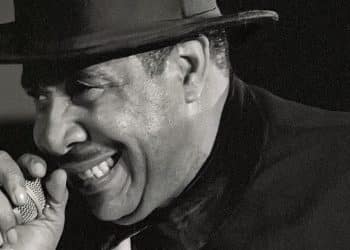Metallica is an American heavy metal band formed in 1981 in Los Angeles, California. The band’s lineup consists of vocalist/guitarist James Hetfield, drummer Lars Ulrich, guitarist Kirk Hammett, and bassist Robert Trujillo. Metallica is one of the most influential and commercially successful heavy metal bands in history.
Metallica’s early work was instrumental in the development of thrash metal, a subgenre known for its fast tempo, aggressive rhythms, and intricate guitar solos. Their debut album, “Kill ‘Em All” (1983), and its follow-up, “Ride the Lightning” (1984), established Metallica as one of the leading bands in the thrash metal movement.
The band reached even greater success with their third album, “Master of Puppets” (1986), which is widely regarded as one of the greatest metal albums of all time. However, tragedy struck when bassist Cliff Burton died in a tour bus accident later that year.
Metallica continued to push boundaries and experiment with their sound, releasing albums like “…And Justice for All” (1988), which showcased complex song structures and political themes, and the self-titled “Metallica” (1991), also known as “The Black Album,” which featured a more accessible and commercially successful sound.
Throughout their career, Metallica has sold over 125 million albums worldwide, making them one of the best-selling music artists of all time. They have won numerous awards, including nine Grammy Awards, and have been inducted into the Rock and Roll Hall of Fame. Their impact on heavy metal music and popular culture is undeniable, and they continue to be one of the most iconic and influential bands in the world.
1. Orion
“Orion” is an instrumental track by Metallica, featured on their 1986 album “Master of Puppets.” The song was written by Metallica’s bassist Cliff Burton, guitarist James Hetfield, and drummer Lars Ulrich. It is one of the band’s most celebrated compositions and is widely regarded as one of the greatest metal instrumentals of all time.
“Orion” is notable for its intricate arrangements, complex song structure, and dynamic shifts in tempo and mood. The song features melodic guitar harmonies, intricate bass lines, and powerful drumming, showcasing the technical prowess of each band member.
The track is divided into several sections, including a slow, atmospheric intro, a mid-tempo groove section, and a fast-paced, thrash metal-inspired outro. The song’s title is a reference to the constellation Orion, which was a source of inspiration for Cliff Burton during the writing process.
“Orion” is often praised for its musical complexity and emotional depth, as well as its innovative approach to metal music. It has become a fan favorite and a staple of Metallica’s live performances, demonstrating the band’s versatility and creativity as musicians.
2. The Unforgiven
“The Unforgiven” is a song by Metallica, released as the second single from their 1991 self-titled album, also known as “The Black Album.” It was written by Metallica’s lead vocalist and rhythm guitarist, James Hetfield, drummer Lars Ulrich, and lead guitarist Kirk Hammett.
“The Unforgiven” is characterized by its melodic guitar riffs, haunting atmosphere, and introspective lyrics. The song explores themes of personal struggle, inner conflict, and the search for redemption. It tells the story of someone who feels trapped by societal expectations and struggles to break free from the chains of their past.
The track features a dynamic arrangement, with soft verses building into powerful choruses, and a memorable guitar solo by Kirk Hammett. The song’s emotional depth and introspective lyrics resonated with audiences, making it one of Metallica’s most beloved and enduring songs.
“The Unforgiven” received critical acclaim and achieved commercial success, reaching the top ten on the Billboard Mainstream Rock chart. It has since become a staple of Metallica’s live performances and remains a fan favorite. The song’s impact on popular culture and its enduring popularity solidify its status as one of Metallica’s classic tracks.
3. Nothing Else Matters
“Nothing Else Matters” is a song by the American heavy metal band Metallica, released in 1992 on their self-titled fifth studio album, also known as the “Black Album.” The song is one of Metallica’s most popular and well-known tracks, known for its introspective lyrics and melodic sound.
“Nothing Else Matters” was written by Metallica’s lead vocalist and rhythm guitarist, James Hetfield. The song’s lyrics express personal feelings and vulnerability, a departure from Metallica’s usual lyrical themes of anger and aggression. The lyrics convey a sense of introspection and the importance of personal relationships.
Musically, “Nothing Else Matters” features a soft acoustic guitar intro followed by heavy, distorted guitar riffs. The song’s arrangement includes orchestral elements, adding to its epic and emotional sound. The song’s melody is memorable, with Hetfield’s vocals delivering the heartfelt lyrics with passion and intensity.
“Nothing Else Matters” was a commercial success, reaching the top ten on the charts in several countries. The song is praised for its powerful lyrics, emotional depth, and memorable melody, making it one of Metallica’s most enduring and beloved songs.
4. Master Of Puppets
“Master of Puppets” is a song by Metallica, released in 1986 on their album of the same name. The song is considered one of Metallica’s signature songs and is a classic of thrash metal music.
“Master of Puppets” features fast-paced riffs, complex rhythms, and aggressive vocals, typical of Metallica’s early thrash metal sound. The lyrics of the song explore themes of control and manipulation, with references to drug addiction and the destructive nature of power.
Musically, “Master of Puppets” is characterized by its intricate guitar work, including a melodic acoustic intro followed by heavy, chugging riffs. The song’s arrangement includes tempo changes and dynamic shifts, adding to its intensity and power.
“Master of Puppets” is praised for its musical complexity and lyrical depth, showcasing Metallica’s talent as musicians and songwriters. The song remains a favorite among metal fans and is often included in Metallica’s live performances.
5. One
“One” is a song by Metallica, released as the third single from their 1988 album “…And Justice for All.” It was written by Metallica’s lead vocalist and rhythm guitarist, James Hetfield, and drummer Lars Ulrich.
“One” is perhaps one of Metallica’s most iconic and well-known songs, characterized by its powerful, dynamic arrangement, and its haunting lyrics. The song is based on the 1938 novel “Johnny Got His Gun” by Dalton Trumbo, which tells the story of a World War I soldier who is severely wounded and left limbless, blind, deaf, and mute, but fully conscious.
The track begins with a slow, melodic guitar intro before building into a series of heavy, thrash metal-inspired riffs and intense drumming. The song’s lyrics explore themes of war, suffering, and the horrors of combat, with the narrator pleading for release from his agonizing existence.
“One” is notable for its epic length, clocking in at over seven minutes, and its complex structure, featuring several distinct sections and a memorable guitar solo by Kirk Hammett. The song’s powerful message and emotional intensity resonated with audiences, making it one of Metallica’s most enduring and impactful songs.
“One” received critical acclaim and achieved commercial success, reaching the top ten on the Billboard Mainstream Rock chart. Its iconic music video, directed by Michael Salomon, further enhanced its popularity, featuring scenes from the 1971 film adaptation of “Johnny Got His Gun” interspersed with footage of the band performing.
The song has since become a staple of Metallica’s live performances and remains a fan favorite. Its enduring popularity and cultural significance solidify its status as one of Metallica’s classic tracks.
6. Spit Out The Bone
“Spit Out the Bone” is a song by Metallica, released in 2016 on their album “Hardwired… to Self-Destruct.” The song is known for its fast-paced thrash metal sound and intense, aggressive lyrics.
“Spit Out the Bone” features blistering guitar riffs, rapid-fire drumming, and intense vocals by James Hetfield, showcasing Metallica’s signature thrash metal style. The lyrics of the song describe a dystopian future where technology has taken over and humans are being controlled by machines.
Musically, “Spit Out the Bone” is a return to Metallica’s thrash metal roots, with a relentless energy and intensity that harkens back to their early albums. The song’s arrangement is fast and furious, with intricate guitar solos and a powerful rhythm section driving the music forward.
“Spit Out the Bone” has been praised by fans and critics alike for its blistering speed and intense energy, making it a standout track on “Hardwired… to Self-Destruct” and a favorite among Metallica fans.
7. For Whom The Bell Tolls
“For Whom the Bell Tolls” is a song by Metallica, featured on their 1984 album “Ride the Lightning.” It was written by Metallica’s lead vocalist and rhythm guitarist, James Hetfield, and drummer Lars Ulrich, and is based on the 1940 novel of the same name by Ernest Hemingway.
The song is known for its distinctive bass intro, played by Cliff Burton, which sets the mood for the rest of the track. “For Whom the Bell Tolls” features heavy guitar riffs, thunderous drumming, and intense vocals, creating a sense of urgency and tension that matches the lyrical themes.
The lyrics of the song are inspired by Hemingway’s novel and explore themes of death, warfare, and the futility of violence. The title refers to the tolling of a bell, traditionally used to announce a death, and serves as a metaphor for the inevitability of mortality.
“For Whom the Bell Tolls” is one of Metallica’s most enduring and popular songs, often cited as a classic of the thrash metal genre. Its memorable riff, powerful vocals, and evocative lyrics have made it a fan favorite and a staple of Metallica’s live performances. The song’s impact on popular culture and its enduring popularity solidify its status as one of Metallica’s signature tracks.
8. Creeping Death
“Creeping Death” is a song by Metallica, featured on their 1984 album “Ride the Lightning.” It was written by Metallica’s lead vocalist and rhythm guitarist, James Hetfield, and drummer Lars Ulrich.
“Creeping Death” is one of Metallica’s most iconic and beloved songs, known for its aggressive thrash metal sound and powerful lyrics. The song’s title and lyrics are inspired by the Biblical story of the Plagues of Egypt, specifically the tenth plague, in which God kills all the firstborn sons of Egypt but spares the Israelites who have marked their doors with lamb’s blood. The chorus chants “Die by my hand, I creep across the land, killing first-born man,” echoing the Biblical narrative.
The track features fast-paced guitar riffs, thunderous drumming, and intense vocals, creating a sense of urgency and aggression that matches the lyrical themes. “Creeping Death” is a fan favorite and a staple of Metallica’s live performances, known for its energetic and dynamic performance.
The song’s impact on popular culture and its enduring popularity solidify its status as one of Metallica’s classic tracks and a quintessential example of their thrash metal sound.
9. The Memory Remains
“The Memory Remains” is a song by Metallica, released in 1997 on their album “Reload.” The song features guest vocals by Marianne Faithfull and is known for its catchy chorus and memorable melody.
“The Memory Remains” features a mid-tempo groove and a bluesy, country-inspired guitar riff. The lyrics of the song explore the theme of fame and the fleeting nature of memory, with Faithfull’s vocals adding a haunting quality to the chorus.
Musically, “The Memory Remains” is a departure from Metallica’s usual thrash metal sound, incorporating elements of country and blues rock. The song’s production is polished and radio-friendly, with a memorable hook that helped it become a hit on rock radio stations.
“The Memory Remains” was a commercial success, reaching the top 30 on the Billboard Hot 100 chart. The song’s music video, which features Faithfull and the members of Metallica in a surreal and eerie setting, received critical acclaim for its artistic and visually striking imagery.
10. Enter Sandman
“Enter Sandman” is a song by Metallica, released in 1991 on their self-titled fifth studio album, also known as the “Black Album.” The song is one of Metallica’s most popular and well-known tracks, known for its heavy guitar riff and powerful vocals.
“Enter Sandman” features a menacing guitar riff and a driving rhythm, with James Hetfield’s vocals delivering the song’s dark lyrics. The lyrics of the song describe nightmares and fears, with references to childhood terrors and the idea of entering into a world of darkness.
Musically, “Enter Sandman” is a blend of heavy metal and hard rock, with a powerful and aggressive sound. The song’s arrangement includes a memorable guitar solo by Kirk Hammett, as well as a dramatic bridge section that builds tension before returning to the main riff.
“Enter Sandman” was a commercial success, reaching the top ten on the charts in several countries. The song’s music video, which features surreal and nightmarish imagery, received critical acclaim for its artistic and visually striking visuals. “Enter Sandman” remains one of Metallica’s most iconic songs and is often regarded as a classic of heavy metal music.









